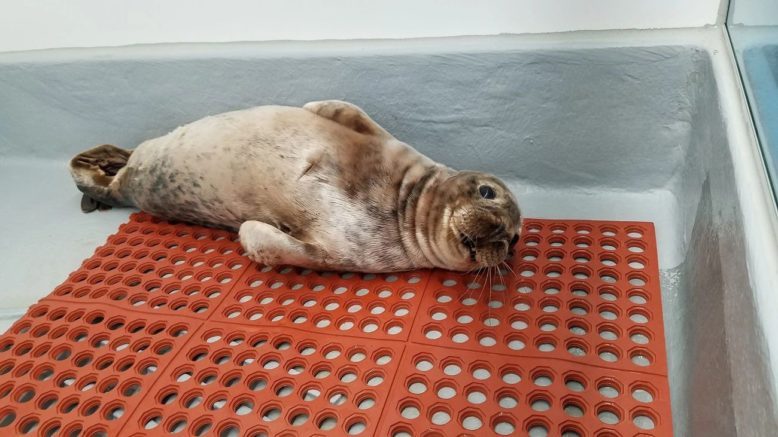
Selfies aren’t the goal for tired, sick or injured seals and sea turtles that wash ashore on New Jersey’s beaches. Yet close-ups with beachgoers are too often what these animals encounter.
“It happens every season,” says Bob Schoelkopf, founder and director of the Marine Mammal Stranding Center (MMSC) in Brigantine, the only facility in New Jersey dedicated to rescuing marine mammals and sea turtles. “One person will see a seal, and the word gets out. Next thing you know, there’s a crowd around it, and we have to go down and relocate the animal to an area less populated with people.”
Since opening in 1978, the MMSC has responded to calls about more than 5,725 animals across 1,800 miles of tidal coastline and waterways from Sandy Hook to Cape May. The center has recently helped an average of 120 animals per year—typically seals, sea turtles and dolphins. Cooler months bring more seals, as well as the occasional manatee. “If they get up here and don’t leave in time [to go south for the winter], that’s when they’re subject to dying from the cold weather,” Schoelkopf says.
In addition to crowds, summer brings collisions with boats and Jet Skis. “Turtles are reptiles and have to come up and take a breath of air between their diving,” Schoelkopf says. “That’s when they get hit by these watercrafts.”
When strandings and collisions occur, the center relies on 300 volunteers living within 15 minutes of a beach to stay with animals until a technician arrives from Brigantine. If the animal is healthy, it is relocated. Otherwise, it is brought to the center for a short observation period. Wounds are treated and blood is drawn to check for internal problems. Animals are rehydrated and left to rest. Food is given on the second day, and a veterinarian prescribes medication based on test results. Animals are monitored via cameras; the center’s Sea Life Museum allows visitors to view the recuperating guests.
Summertime typically sees fewer strandings than in colder months and gives staff time to repair the center’s boat and trucks for transporting seals, sea turtles, dolphins and whales. Holding tanks and an indoor pool at the center, which can accommodate a small whale or dolphin, are also cleaned. Interns assist with rehabilitation, rescue and education efforts, and give tours of the museum. Transportation, food, medicine and maintenance are funded via adopt-an-animal packages, donations, memberships and an Amazon wish list, as well as gift-shop purchases.
Schoelkopf urges anyone who spots a stranded marine mammal or sea turtle to immediately dial the center’s 24/7 hotline. “Even if you don’t know what you’re looking at,” he says, “the best thing to do is give us a call.”
The Marine Mammal Stranding Center was founded in 1978 in order to rescue, rehabilitate and release marine mammals and sea turtles in distress along New Jersey’s waterways. To report a sighting, call the center’s 24-hour hotline at 609-266-0538. Those living within 15 minutes of a beach year-round can apply for the center’s volunteer program. Visit mmsc.org to learn more and donate.
